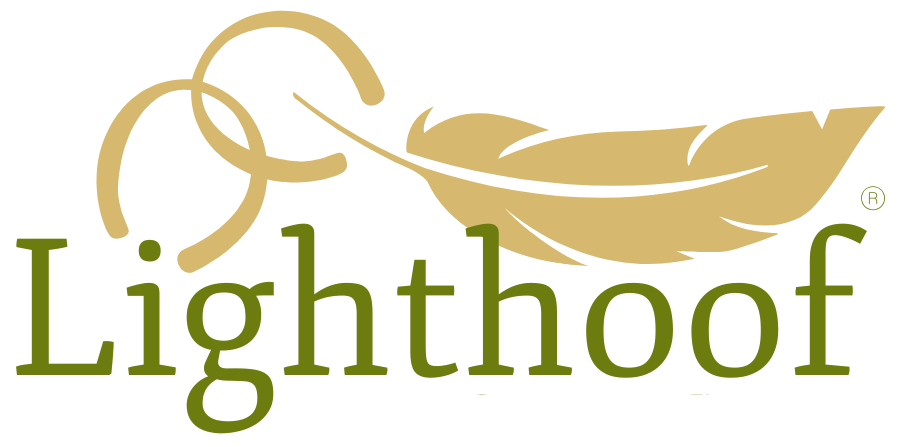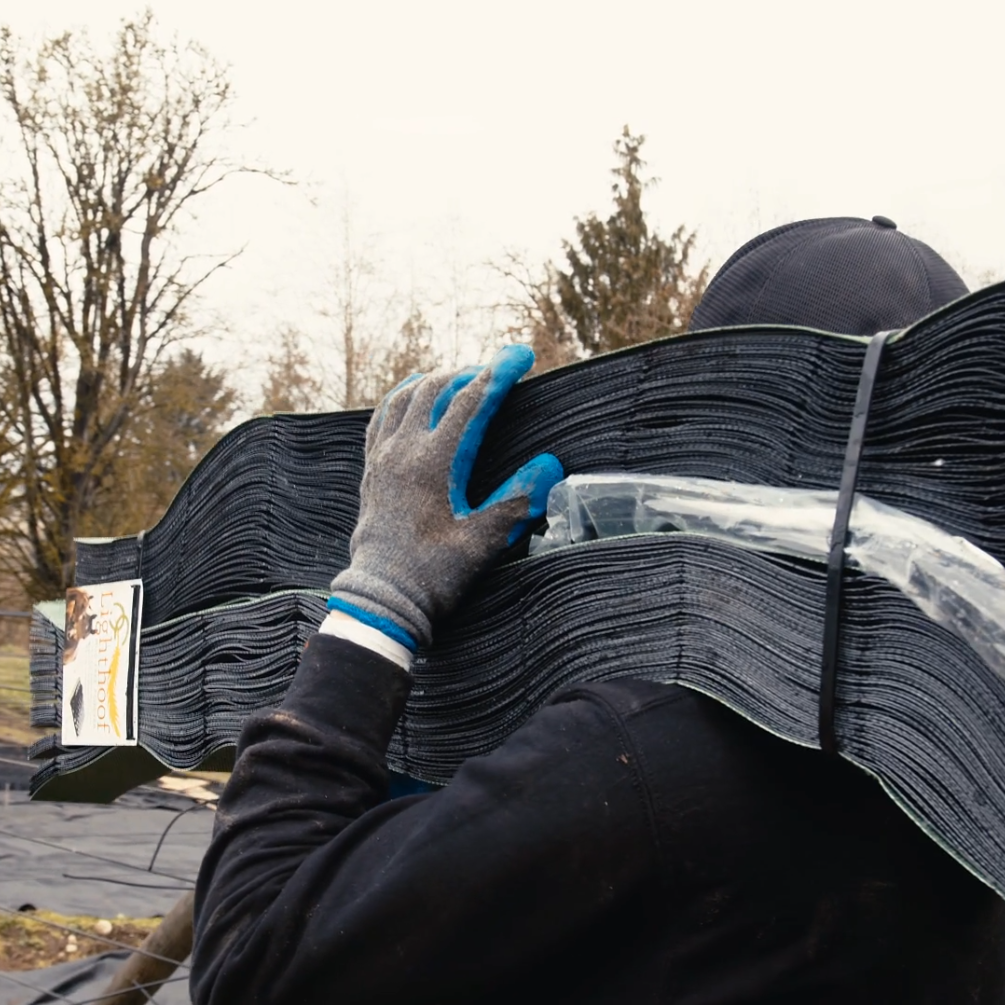Spring is here and it’s time to get outside and get some projects done! Here are three quick, easy and inexpensive improvements you can make to your farm that will benefit both horses and humans for years to come.
1. Build Your Own Slow Feeders
This is an easy project that can save you hundreds of dollars in wasted hay, prevent organic matter build up in your paddocks or stalls and have fantastic mental and physical health benefits for your horse.
 Grazing is a natural activity for horses which benefits their digestive system in many ways plus alleviates boredom and restlessness. Unfortunately, not all horses are able to graze year round due to pasture availability or weight issues. Create a grazing atmosphere with your horse’s hay by building enclosures that can hold a full day’s worth of forage and limits consumption to a healthy rate.
Grazing is a natural activity for horses which benefits their digestive system in many ways plus alleviates boredom and restlessness. Unfortunately, not all horses are able to graze year round due to pasture availability or weight issues. Create a grazing atmosphere with your horse’s hay by building enclosures that can hold a full day’s worth of forage and limits consumption to a healthy rate.
To reduce hay waste, build a solid-wall enclosure that prevents hay scraps from falling on the ground - such as a wood box. A 2’ x 4’ by 2’ tall box will hold an entire 60-90 pound square bale at a time. Feeding from box at ground level, rather than a hanging net, allows your horse to eat in a natural grazing position and can help reduce unnatural under-muscling in the neck.
To slow consumption, cover the hay with a grate or net that has 1”-3” openings. Slow Grazer in Olympia, WA sells 3” metal grates with DIY kits to build your own box at www.grazingbox.com.
N.A.G. Nets are a good source for 1”-1.5” hole nets that you can fill and place on the ground or in an enclosure. Their website is www.slowfeeder.com.
Make sure to check your hay for mold, which can be easy to miss if you are loading an entire bale at a time and inspect your slow feeder for damage on a regular basis. Horses can be very rough with the thing that holds the food!
2. Fix and Prevent Mud in Your Gate Areas
The area in front of the gate is typically a problem spot on farms. This high traffic location takes a lot of abuse and tends to have chronic problems with deep mud. This spring, create a “landing pad” for your horses with an easy to install, new product for managing extreme mud situations.
Lightfoot Equine Surfaces creates paddock base panels that address high traffic mud areas in a different way than the hard plastic grid solutions. The Lightfoot panels are made of flexible HDPE cells that are 3”-4” in depth. Fill the cells with angular crushed gravel to create a permanent “mattress” that floats over the mud and creates a firm dry surface.

 One panel measures 21.4’ x 8.4’ and can be cut in half with sharp scissors to use on two gate areas, or create a larger area using just one panel. To install, place a layer of 6-8oz non-woven geotextile fabric over the mud, then stretch the Lightfoot panel over the fabric and stake at the corners. Fill with a ⅜” - ⅝” minus crushed rock and compact. Once compacted, the stakes can be removed and the panels will hold their position creating a firm, mud-free surface.
One panel measures 21.4’ x 8.4’ and can be cut in half with sharp scissors to use on two gate areas, or create a larger area using just one panel. To install, place a layer of 6-8oz non-woven geotextile fabric over the mud, then stretch the Lightfoot panel over the fabric and stake at the corners. Fill with a ⅜” - ⅝” minus crushed rock and compact. Once compacted, the stakes can be removed and the panels will hold their position creating a firm, mud-free surface.
Lay railroad ties around your panel to prevent gravel from sloughing off or undercutting on the outer edge. Using a 12” bit, drill a hole on either end of the tie and drive a metal stake into the hole to pin the ties in place. Make sure to sink the stake well in the hole so that a horse could not step on it.
Enjoy your new permanently mud-free gate area for years to come! No more slipping at turn in time or muddy legs and hooves. Complete installation instructions can be found in the free planning kit downloadable at www.lighthoof.com/pages/free-planning-kit.
3. Create a Track Paddock
On small farms where pastures have to be rested much of the year, or for easy keepers who can’t spend all day on grass, life can get kind of boring. Fortunately, if you can be a little creative with hot-wire, you can create an exercise and entertainment area that you can use year round.
The track paddock concept was first popularized by Jaime Jackson, a natural horse care advocate who published a book on the subject called Paddock Paradise: A Guide to Natural Boarding (Paddock Paradise Book).
 Using step-in posts and electric fence line (or permanent posts and fencing, if you prefer), create a rounded edged inner fence within your outer fence. Now your horses have a “track” around the inner pasture that they can explore or get up to speed in while they are being kept off the grass inside the inner fence.
Using step-in posts and electric fence line (or permanent posts and fencing, if you prefer), create a rounded edged inner fence within your outer fence. Now your horses have a “track” around the inner pasture that they can explore or get up to speed in while they are being kept off the grass inside the inner fence.
The track should be wide enough to turn safely in or for horses to pass each other if you have more than one horse in the area. 12’ would allow a truck or tractor to get in as well.
Offering food, water and minerals at various points along the track will encourage exploration. This is a very simple solution to pasture resting that encourages and allows for exercise. You could get even more creative with your track layout to create a setting that mimics a free ranging environment and takes advantage of unused space on your farm. Jaime Jackson’s book goes into great detail on the research behind track paddocks and ways to promote healthy natural behaviors.
Your horses will benefit from the mental and physical health benefits of these renovations and you will enjoy the time and money they save. Easy enough to do in a weekend and cheap enough not to break the bank, there are three spring projects that you can look forward to!

This article was first published in the April 2013 edition of Flying Changes, a sporthorse enthusiast magazine local to the Pacific Northwest. For more information or to obtain a subscription to Flying Changes, visit their website www.flyingchanges.com.


Leave a comment
This site is protected by hCaptcha and the hCaptcha Privacy Policy and Terms of Service apply.